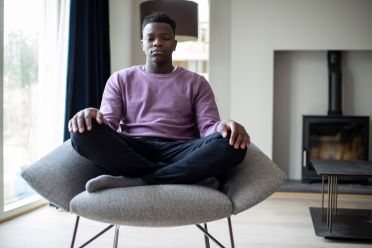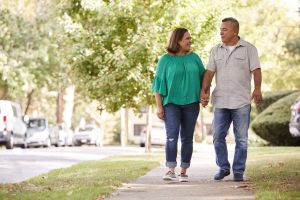5 Ways to Cope with Anxious Feelings
Author: Dr. Meghan Pasha
Fears, worries, uneasiness, nervousness; we have all experienced anxious feelings at some point in our lives. Anxious feelings often instruct us to keep moving, keep thinking, and keep swirling. Here are 5 ways to cope with these anxious feelings in the moment and find calm again.
Pause
Because anxiety thrives on future-focused thoughts, our minds can swirl with “what-ifs?” and worries about what is going to happen next. One of the most important, and difficult, ways to cope with anxious thoughts is to first pause. Prior to intervening with these thoughts, we must first be still enough to label them as anxious. This can mean physically pausing by sitting down, turning away from your computer or phone, or taking time out of a task to be still. In the stillness, we can more clearly take inventory of our mind and body. According to Anxiety.org, “Mindfulness teaches us how to respond to stress with awareness of what is happening in the present moment, rather than simply acting instinctively, unaware of what emotions or motives may be driving that decision. By teaching awareness for one’s physical and mental state in the moment, mindfulness allows for more adaptive reactions to difficult situations.”

Breathe
Within the body, anxiety increases our breathing and heart rate, concentrating blood flow to our brain, where it is needed to prepare us to face an intense situation. When we focus on breath work, we can reverse this stress response once it occurs, helping to be less reactive in stressful situations, and even improving physical processes such as sleep, pain control, and digestion. One common tool for this is diaphragmatic breathing. Using your diaphragm, a large muscle in your abdomen, this type of breathing focuses on the belly expanding when we breathe in and the belly falling when we breathe out. Over time, we forget how to breathe this way and instead use our chest and shoulders, causing short and shallow breaths, which can increase stress and anxiety. For several options for breathing exercises, see our blog post on breath-fullness by clicking here.
Feel
Getting in touch with sensations in the body and can help to elicit a relaxation response and manage anxious feelings as well. Relaxation, or the absence of tension in the body’s muscles, conflicts with our body’s anxiety response. Edmund Jacobson, a Chicago physician, developed a set of exercises called Progressive Muscle Relaxation (PMR) to reduce muscle tension and communicate calm and safety to our body. Progressive Muscle Relaxation has a reverse effect on the body, eliciting the relaxation response – lowering our heart rate, calming our mind, and reducing bodily tension. PMR also can help us become more aware of how their physical stress may be contributing to our emotional state.

Several resources exist to guide you through these exercises that can take anywhere from 2-20 minutes. To get a brief introduction to this method of relaxation, try clenching your fists hard enough to feel significant tension for 5-7 seconds. Then let go and drop your hands freely to your side. Notice the difference between the feeling in your fist while tensing and as your hand hangs freely. You may feel blood flowing to the hand. You may also experience a feeling of warmth. PMR involves doing this with each group of muscles in the body. The most benefit comes from practicing these exercises often.
Talk
We are innately relational and wired for bonding with others. Utilizing safe supports is another way to help our minds and bodies come to a steady, regulated state. When we share our experiences with trusted others, we create opportunities to feel heard and understood. Even more so, our close relationships can help organize our feelings and provide comfort in our anxious feelings. These relationships also remind us that what we feel is valid and important. Carving out time to catch up with a close friend, downloading with a romantic partner, or connecting with a family member are all ways to cope with anxious thoughts in the presence of a trusted other.

Move
Gentle and mindful movement, such as taking a walk, stretching, or practicing yoga can all help in coping with anxiety. By reducing perceived stress and anxiety, these activities modulate stress response systems. Like breathing, practicing yoga reduces the heart rate, lowers blood pressure, and eases respiration. There is also evidence that yoga practices help increase heart rate variability, an indicator of the body’s ability to respond to stress more flexibly. For more information on practicing mindful movement, like yoga, at home, visit our blog by clicking here.
If you or someone you know is experiencing anxious feelings and looking for support or strategies for coping, please contact us today.
Related References & Resources:
https://www.nimh.nih.gov/health/statistics/any-anxiety-disorder.shtml
https://www.anxiety.org/can-mindfulness-help-reduce-anxiety
https://www.verywellmind.com/how-to-reduce-stress-by-deep-breathing-2797585
https://www.uofmhealth.org/health-library/uz2225
https://www.health.harvard.edu/mind-and-mood/yoga-for-anxiety-and-depression





